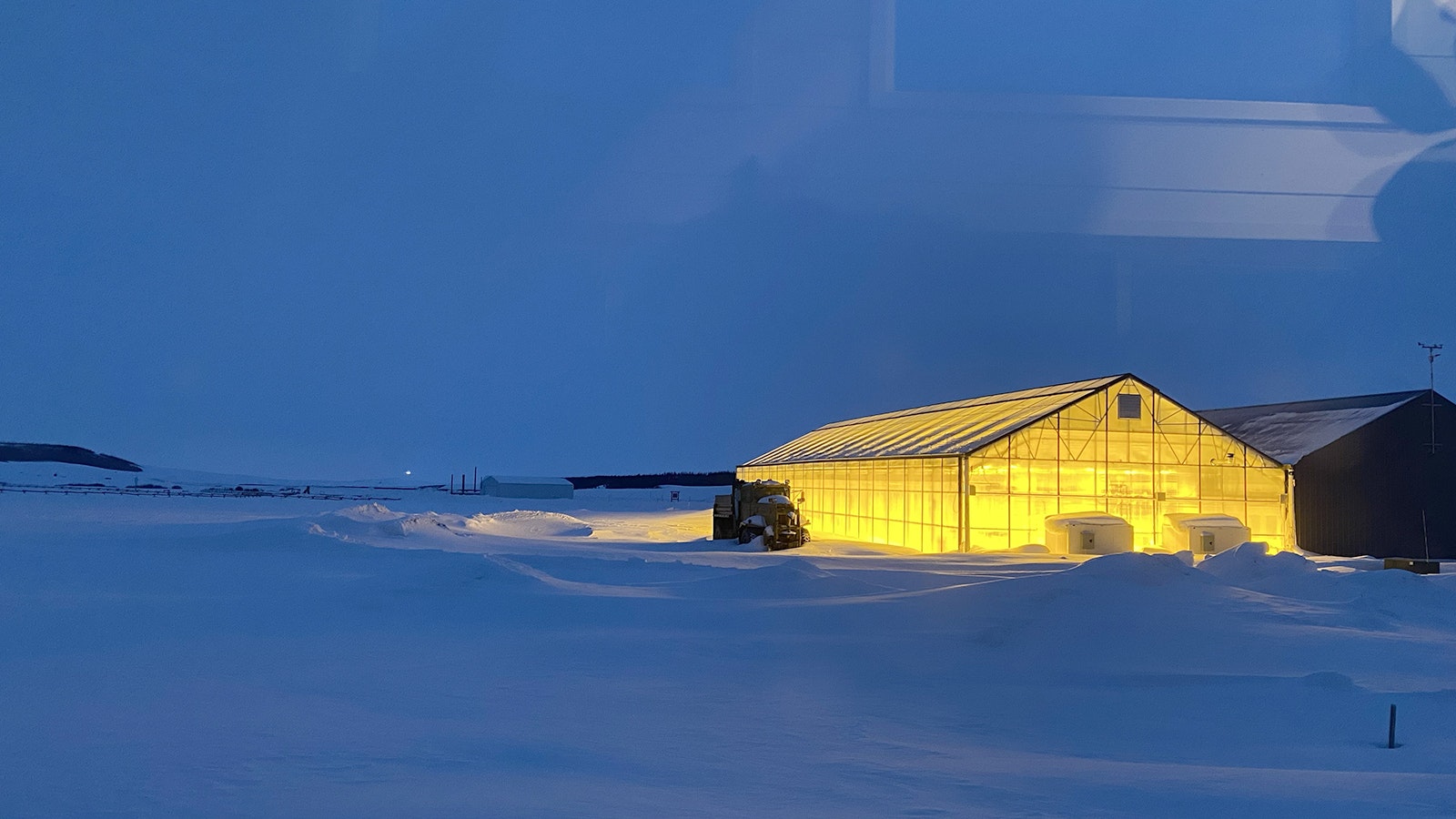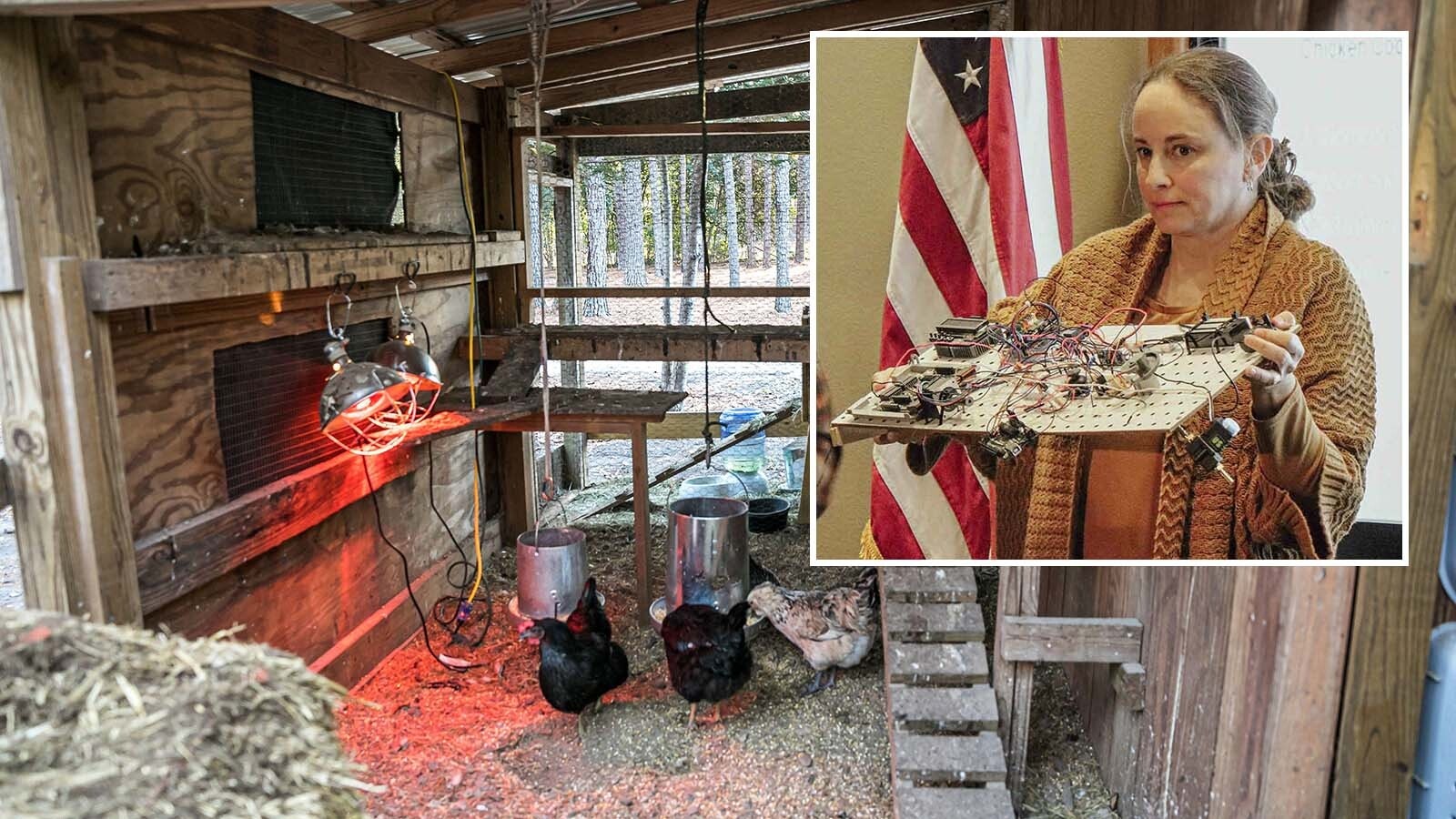SUBLETTE COUNTY — Sublette County's mountain vistas, gin-clear rivers and wide open spaces are truly inspiring, but arguably no one ever traveled through this part of Wyoming and concluded that it would be a great place to grow tomatoes.
Until about two years ago. That's when entrepreneur Dakin Sloss recognized this high-elevation, short growing season area as a food desert and he set out to do something about it.
Many people who have traveled the stretch of Highway 191 from Pinedale out past Daniel Junction, then north up through the rolling sagebrush-covered hills have seen Sloss's new greenhouse.
Many of those same people may have wondered how many tons of tomatoes it will take to offset the power and gas bills required to produce vegetables in a place where strong winds and frosty temperatures are as predictable as magpies on roadkill.
The answer? It doesn't matter.
A Growth Opportunity
Sloss is a venture capitalist and a Stanford graduate who was recognized in 2016 by Forbes Magazine as a 30 under 30 energy entrepreneur.
He's also a philanthropist and this project is only the first phase of a long-term investment he named the SatChitAnanda Ranch. The ranch is a 600-acre parcel and the name comes from a Hindu concept that means truth, consciousness and bliss.
"The big picture is we are what we eat," Sloss told Cowboy State Daily. "There's not really a surplus of healthy local vegetables here and I think it's important for the communities of Jackson and Pinedale to have that."
The greenhouse is a 5,000-square-foot building with a heated floor and a ceiling curtain system used to create shade when needed or an insulation barrier during the winter.
A fine mist in the air creates a welcoming level of humidity to pamper computer-monitored plants ranging from herbs to peppers to melons and various root vegetables.

The technology and design of the greenhouse comes from the Netherlands. Sloss said right now his crew is learning what conditions work best for the various vegetables.
As they dial the greenhouse in and expand they'll be able to isolate certain crops in conditions that suit them best and drastically increase production.
"We are really trying to provide the food people need in order to take care of their bodies," he said. "It's really a service project, you don't start something like this to make money. But eventually it will produce a little bit of profit so that I don't have to put money back into it."
At present, the greenhouse can't keep up with local demand. They haven't advertised but locals know they can stop by and get fresh vegetables on Monday, Tuesday and Wednesday.
By next August, Sloss plans to build three new greenhouses on the property.
"Right now we have way more people coming in to buy stuff than we can possibly service and we apologize for that," he said. "By next fall we should be able to meet the local demand and it should be a self-sustaining business."
Just The Beginning
Sloss declined to disclose specifics on the investment he's made in the ranch. As the greenhouse project progresses, he intends to explore wind and solar technology.
Presently, the building is lit from 6:15 a.m. to 8:15 p.m. by 42,000 watts of lighting and heated with propane. They intend to switch over to natural gas soon.
He would prefer to market vegetables from the ranch, but also is supplying a few restaurants in Jackson and Pinedale. He is also considering a community supported agriculture (CSA) program wherein people subscribe to a service, pay up front and pick up a box of vegetables every week.
"At the end of the day the objective is to provide average people with high quality food at a reasonable price," he said. "We have tracked the demand level so far and when we upscale we will be able to meet local demand and sell the excess to restaurants."
LeAnn and John "Coop" Shelton are a couple from North Carolina who met Sloss while they were working in a Jackson Hole bar / restaurant.
They grew up on farms and have always been interested in vegetable production and preservation. In their conversations with Sloss they must have talked a lot gardening because one day one of Sloss's associates approached them about running a garden project.
"I thought he just wanted us to build some raised beds or something like that," said LeAnn.
"I'm all in," was Coop's response when he heard the greenhouse details.

State-Of-The-Art
During a tour of the greenhouse and accompanying office space, LeAnn described the technology the business uses.
There's a 5,000-gallon water tank that sits full until the water comes up to room temperature so as not to shock the plants. The irrigation water flows through a manifold where pH and fertilizer levels are balanced automatically. Then it flows through the greenhouse and back again.
On one side of the greenhouse is the hydroponic set up where seeds are placed in a medium called rock wool that is saturated in the treated water. Other plants in the greenhouse are grown in soil, perlite or a combination of the two. Root vegetables in raised beds including carrots, beets, onions and a few others are hand-watered.
Irrigation in the remainder of the greenhouse is computer controlled.
Vegetable production is focused on tomatoes, cucumbers, squash and peppers. They also produce kale, lettuce, arugula, beets, and strawberries. Small amounts of melons, radish, fennel and horseradish are also available. Some plants are trained to grow up a trellis system.
During the summer it takes five weeks for most crops to mature to harvest level. In the winter that stretches out to about seven weeks, she said.
Sensors control the level of light entering the building and activate the shade system. An aspirator monitors and controls the humidity. LeAnn said the room is maintained at 65% humidity during the day and 55% at night.
Rather than using pesticides in the greenhouse, they use predatory insects - green lace wings and parasitic wasps - to prey on the aphids and thrips. They also have bees in the greenhouse to help with the pollination.
Coop said the bees work well in the greenhouse but outdoors other pollinators like butterflies and hummingbirds combine to do a more complete job.
He said the greenhouse bees don't work their way down deep into the squash blossoms where they are needed. They would rather find pollen from the smaller blossoms on many of the other plants because it's more efficient, he said.
Bees are slackers when it comes to squash so Coop spends time nearly every morning with a paint brush transferring pollen from male blossoms to female blossoms, he said.

John Thompson can be reached at: John@CowboyStateDaily.com





